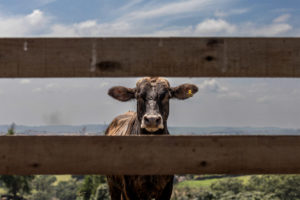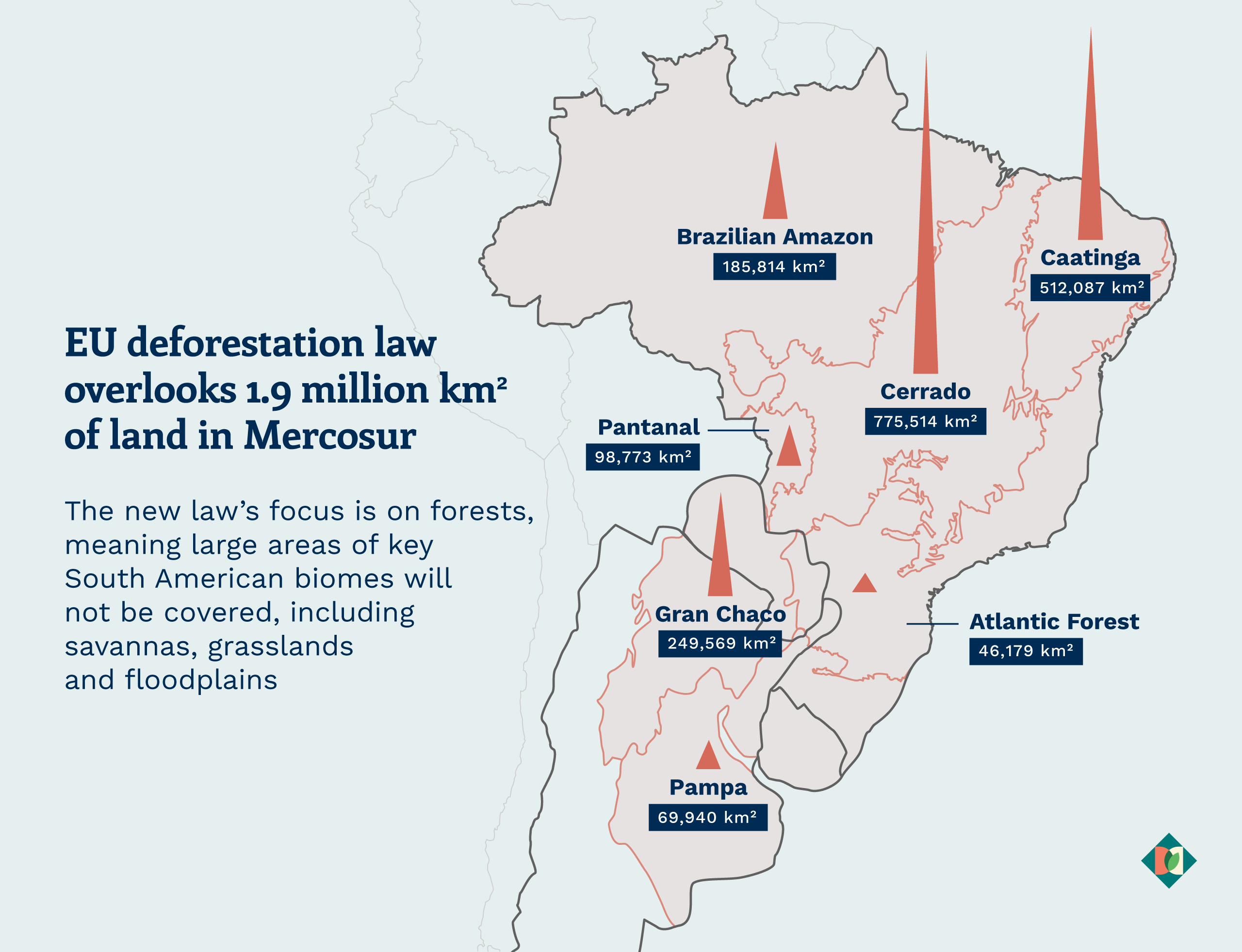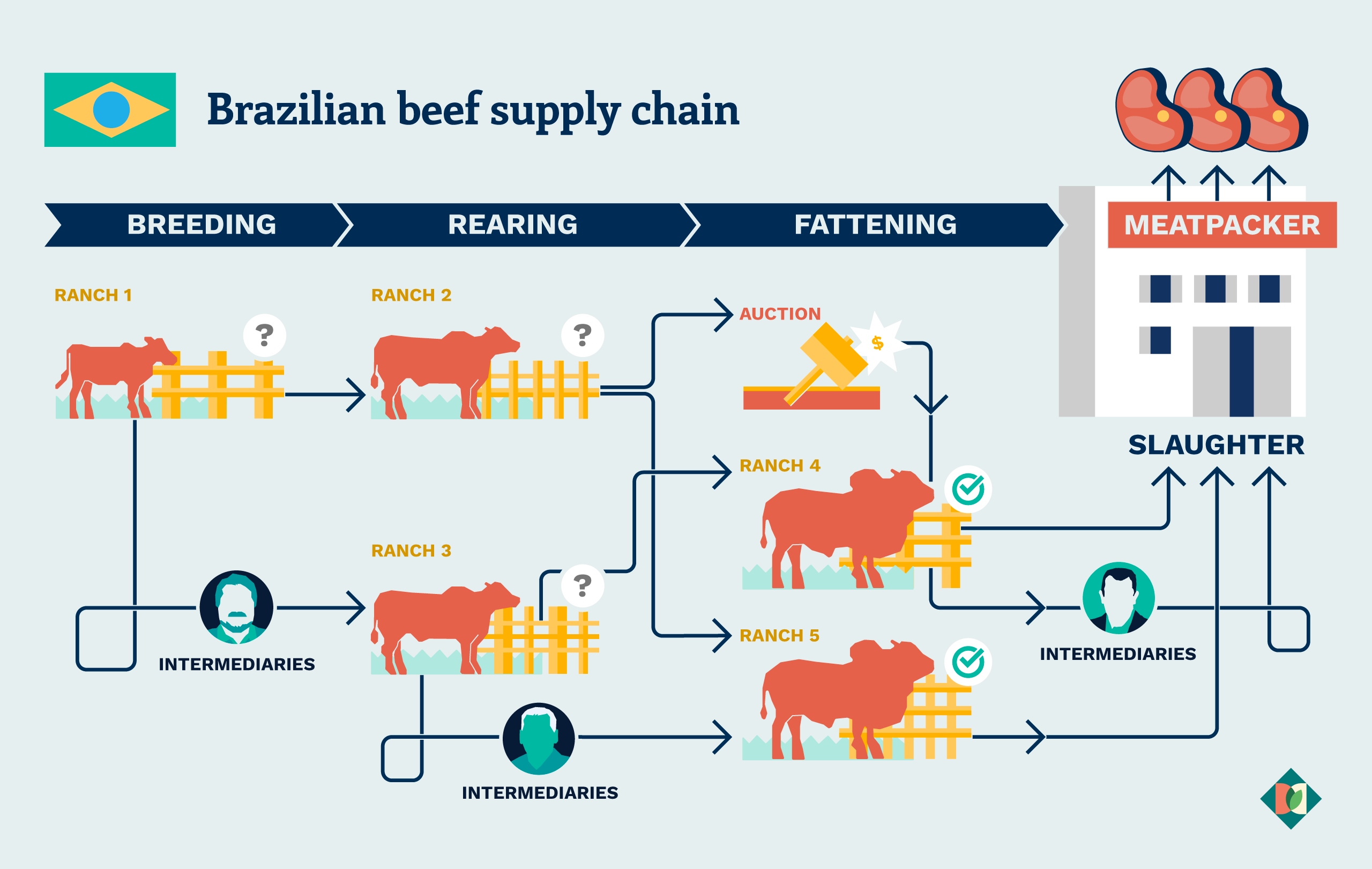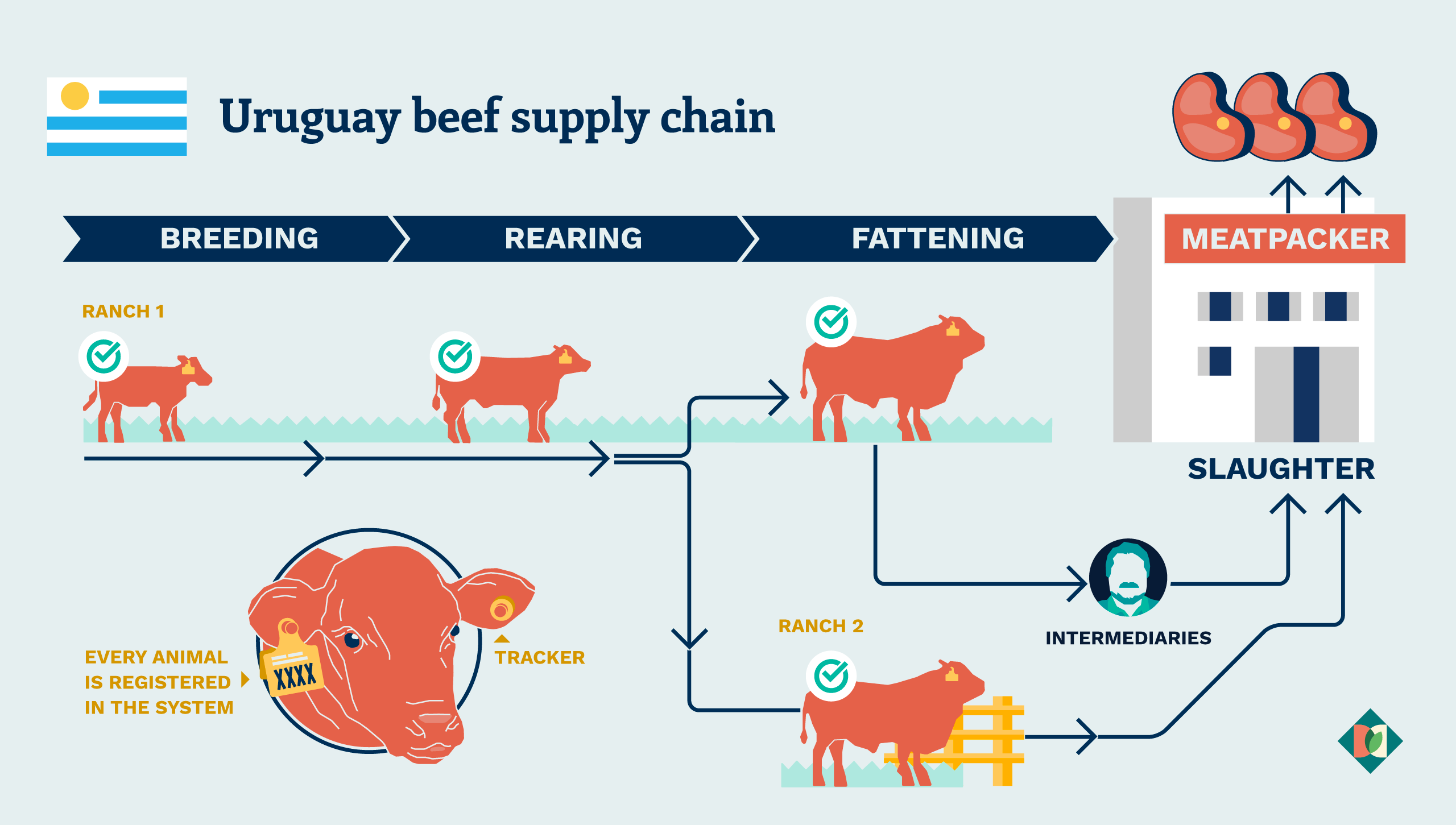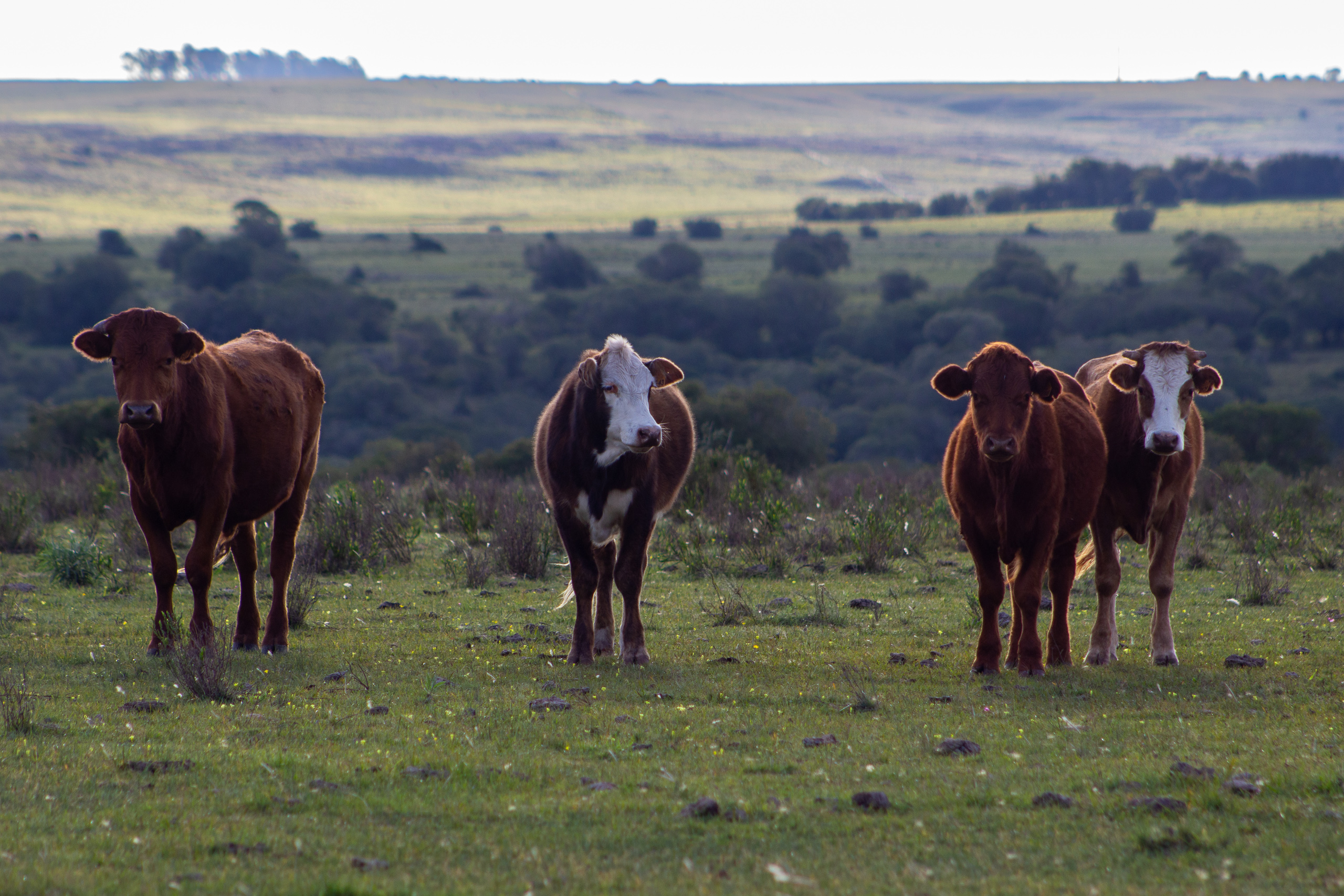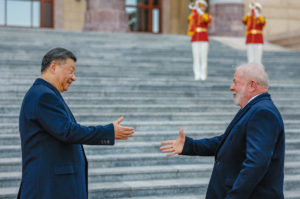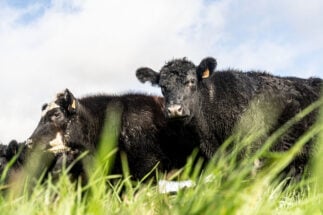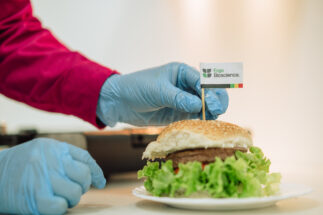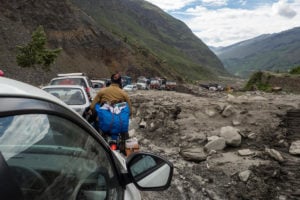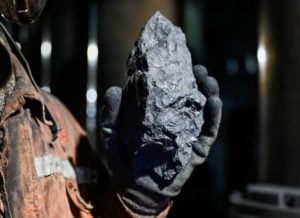New European legislation to ban the import of commodities associated with deforestation and human rights violations entered into force at the end of June, and could significantly impact the agriculture-dependent countries of Mercosur, the trade bloc formed by Argentina, Brazil, Paraguay and Uruguay.
The regulation targets the production and supply chains of palm oil, soy, cattle, timber, cocoa, coffee and rubber, as well as derivatives such as furniture, chocolate and paper. These commodities account for most of the deforestation implicated in imports by the European Union (EU). Without these rules, the EU itself reports, these imports could cause the loss of more than 248,000 hectares of forest each year – an area almost the size of Luxembourg.
The European deforestation law applies to all countries with which the bloc has trade relations, but it could have a particular impact on those of Mercosur, which counts the EU as its largest trade and investment partner and the second largest in trade in goods, behind only China. In 2021, EU imports from the four Mercosur countries totalled 43 billion euros (US$48 billion), 20% of which were vegetable products such as soybeans and coffee.
Experts consulted by Diálogo Chino believe that these stricter trade regulations will help to clean up the Latin American supply chains that are most permeated by negative socio-environmental impacts. However, they caution that the law could create new problems, such as the migration of damage to biomes not covered by the law. Agribusiness sectors and Mercosur governments, meanwhile, have described the regulation as protectionist.
How the EU deforestation law works: targeting companies
Under the new legislation, companies exporting to the EU will need to provide “conclusive and verifiable” information that their commodities are deforestation-free and in compliance with local laws in exporter countries. This will require traceability of all their suppliers, with geolocation of each establishment through which the products have passed.
The law sends a “strong signal” that the South American market needs to act, says André Vasconcelos, global engagement lead at Trase, a supply chain monitoring platform: “Some companies already have their own verification processes, but this needs to gain scale and be more transparent.”
A recent analysis by Global Canopy, the organisation behind the Trase initiative, showed that the companies driving the most deforestation in tropical areas are unprepared to implement the new legislation, with more than three quarters of them lacking a commitment to traceability.
“This is an area where the EU can and should contribute with financial resources, so that there is an equal division of costs along the chains,” says Vasconcelos. Companies will have 18 months to adapt, dated from the law’s entry into force at the end of June, with smaller businesses given up to two years to prepare – a process in which, according to the law, the EU will provide technical assistance.
Luciana Téllez, a researcher with Human Rights Watch who has followed the new law’s development, points out that “its strongest aspect is to prohibit any kind of import linked to deforestation,” regardless of whether it is legal or illegal. This, she says, prevents a country from adjusting its norms to legalise more deforestation, as well as facilitating the law’s implementation.
The law will also help combat ongoing human rights violations linked to agricultural production in South America, Téllez says: “It provides greater support for Indigenous peoples seeking land rights and in holding companies that violate their rights accountable.” However, the researcher adds, there are still doubts about the regulations that will serve as the basis for monitoring these cases.
This risk level assessment creates an incentive for countries to adopt reforms and clean up their production chainsLuciana Téllez, Human Rights Watch
In parallel, the EU will carry out a risk assessment of exporting countries by 2025, considering data such as deforestation and agricultural expansion rates, production trends and human rights abuses, according to “scientific evidence and globally recognised sources,” the law’s text reads. From there, the bloc must list the degree of risk – low, standard or high – of each exporting nation. “This assessment creates an incentive for countries to adopt reforms and clean up their production chains, because in the future the Commission can revise and lower the risk rating,” Téllez says.
The degree of risk will impose more or less rigidity in surveillance, so some countries have already made it clear that they must react if they are considered high-risk. “The EU Commission will be under a lot of political pressure from its partners to downgrade the risks of the markets,” Téllez says.
Brazil: a new direction for livestock?
Brazil is one of the countries that would “probably” begin with a high-risk listing, Christophe Hansen, a member of European parliament (MEP) and rapporteur for the legislation, told press in April.
Agribusiness, spearheaded by soy and beef production, is the driving force of Brazilian exports, with the EU being its second largest customer, behind only China. But this same sector also drives environmental destruction: in 2022, agribusiness was the vector for 95.7% of deforestation in the country, and almost all of it was illegal, according to MapBiomas.
225 million
The number of cattle in Brazil – larger than the country’s human population of 203 million, and a significant challenge for traceability efforts
Deforestation permeates various supply chains in the country, but cattle ranching is the most problematic, according to specialists. Part of the difficulty comes from this industry’s size – being comprised of 2.5 million different properties – and the supply chain’s complexity, being split into several stages: some farms specialise in breeding or raising cattle, while others fatten, slaughter and export them. Thus, it is common for an animal to pass through several different properties before reaching the market.
In supply chain tracking efforts, the biggest bottleneck is tracing the properties of the first stages of animal breeding, explains Pedro Burnier, an agronomist and manager of the cattle breeding programme of Friends of the Earth in Brazil, which monitors the sector. “The most difficult thing to monitor nowadays is when the guy who fattens cattle buys from the rearing guy, who buys from the calf breeder,” he says.
Besides its sheer size and spread, the cattle ranching supply chain also lacks transparency. Authorities monitor the sector through official documents filled out by rural landowners. The information is self-declaratory and therefore depends on the farmer’s good faith. Slaughterhouses also have their own tracking systems, but do not disclose their data.
These flaws in tracking can result in so-called “cattle laundering” – that is, when a cattle rancher fined for socio-environmental crimes sells their production to another farm, which then carries the load with apparent legality.
A series of investigations, produced by environmental organisations and press outlets in recent years, has shown that the cattle sold by large slaughterhouses often come from illegally deforested areas. The companies have already signed commitments to change their conduct with authorities, for example, the Federal Public Ministry of the northern state of Pará. “We have seen that commitments are established, but they don’t move forward,” says Thaís Bannwart, spokesperson for Greenpeace Brazil’s Amazon campaign.
Brazil’s agriculture minister, Carlos Fávaro, recently stated that full traceability is an “inevitable path,” because “those few who commit environmental crimes contaminate the whole system.” Today, around 80% of deforestation in the country is associated with large cattle ranchers in the latter stages of the production chain.
Faced with domestic and international pressures, the sector is slowly showing signs of moving forward. The Brazilian Confederation of Agriculture and Livestock (CNA) recently proposed a voluntary system to trace each of Brazil’s 225 million cattle – larger than the country’s human population of 203 million. Currently, according to Burnier, individual identification covers only 2% of the herd. Not surprisingly, the CNA estimates that it will take at least eight years to adapt – five times longer than the deadline set by European legislation. In addition, the data would remain under the control of the organisation and would not be made public.
Since taking office in January, Brazilian president Luiz Inácio Lula da Silva has made clear that he wants to put the country on a more positive environmental path. His government has launched a plan to reach zero deforestation in the Amazon by 2030, and is working on concluding plans for the country’s other biomes this year. In his first six months in office, deforestation fell 34% in the Amazon, but grew 21% in the Cerrado, compared to 2022.
On Brazil and Mercosur’s relations with the EU, Lula has appealed for “mutual trust, not distrust and sanctions.” After meeting with European Commission president Ursula Von Der Leyen in June, the Brazilian president said that a law whose effect goes beyond European territory will bring “potential restrictions on Brazilian agricultural and industrial exports.”
Argentina: anti-deforestation pilot programme
In other Mercosur countries, the challenges to comply with European law are similar. In Argentina, beef and soy production, largely destined for export, were the main culprits behind the country’s loss of 7 million hectares of forests in the last two decades.
Soy is Argentina’s biggest commodity export, most of it in the form of soymeal, with India, China and the Netherlands its top buyers. Europe is the main destination for the country’s chilled beef, although China is the largest buyer of frozen beef.
Patricia Bergero, deputy director of economic studies at the Rosario Stock Exchange (BCR), explains that 87% of the country’s soy production is exported, which is why the European legislation “is not a small thing.”
“There will undoubtedly be changes for producers, especially with the identification or georeferencing of the property of origin of grains,” says Bergero. “This will go through the entire oilseed value chain.”
There will undoubtedly be changes for producers, especially with the identification or georeferencing of the property of origin of grainsPatricia Bergero, Rosario Stock Exchange
As for beef, Fernando Storni, president of the Argentine Roundtable on Sustainable Meat (MACS), adds that the country “needs a decisive improvement in the current traceability system.” He calls, for example, for the mandatory use of electronic identification of animals.
Since 2020, the province of Santa Fe has been testing a pilot programme in this area. To date, 108 of the region’s 26,000 cattle ranchers have signed up for tracking, with satellite images made available on a digital platform. “Some producers are not prepared, so we work with them on training,” says Pablo Fiore, director of beef and poultry production for the Santa Fe authorities. “For now, the programme is voluntary, but those who do not join will have less chance of exporting.”
Juan Carlos Cotella is director of Aapresid, an association of soybean growers, and a member of VISEC, a platform that certifies producers in the Gran Chaco, a biome heavily impacted by the advance of deforestation.
The Chaco is where 13% of Argentina’s soy is produced, but few farmers adopt traceability, notes Cotella. “There is a lot of work ahead and it is not clear how this will be conducted in the territory,” he adds.
Paraguay: uncertain impacts
Paraguay is the Mercosur country with the lowest exports of agricultural commodities to the EU – but it is still a relevant supplier. In 2020, Paraguay sent 6% of all its agricultural production, including soy and meat, to the European bloc.
Guillermo Achucarro, a Paraguayan climate change researcher at Base Investigaciones Sociales (Base-IS), celebrates the approval of the anti-deforestation law, but fears it will have little effect in a country that faces an “overpowering agribusiness” lobby and a relatively low trade exchange with the EU.
In the last two decades, Paraguay has lost around 6 million hectares of forest, 93% of which was associated with the production of soy, meat and timber. But this loss has slowed in the last decade, according to data from the country’s National Forestry Institute.
Paraguay’s agriculture minister, Moisés Bertoni, claims that the country, like other nations in the region, already has its internal regulations to ensure food trade is decoupled from deforestation. “We have parts of the country with zero deforestation since 2005, while in others, each producer protects 50% of their area,” says Bertoni. “We are concerned about how the regulation will be applied and that it will end up excluding small producers.”
We are concerned about how the regulation will be applied and that it will end up excluding small producersMoisés Bertoni, Paraguay’s Minister of Agriculture and Livestock
Fabio Villalba is a small-scale vegetable and meat producer from the Yacare community in Cordillera department, east of the capital city, Asunción. Since 2011, he has been part of an agroecological producers’ association. “There are no more trees, 90% of our country is already totally or partially deforested,” Villalba claims. “I don’t believe that this will change much with the new European law.” Despite his sense of near-total environmental degradation, data from Global Forest Watch indicates that Paraguay has lost 28% of its tree cover since 2000.
Uruguay: setting the example on tracing
Luciana Téllez considers Uruguay the South American country most prepared to meet the demands of anti-deforestation legislation. According to her, its system of cattle herd traceability is already compulsory, besides being “transparent and well regulated.”
Since 1998, the country’s traceability programme has been recognised by the EU. In 2004, the country started individual bovine monitoring, which later became the National Livestock Information System. “The traceability of cattle in Uruguay allows the trajectory of the animal to be followed from birth to slaughter, providing data such as the date and place of birth, sex, breed, movement and changes of ownership,” explains Jorge Acosta, agronomist at the National Meat Institute (INAC).
In this process, each bovine gets a kind of earring, which identifies its numbering, and a radio transmitter, which stores information from the animal and its movements on a database.
Since 2007, all Uruguayan producers have also adopted a system that monitors animals at each step of the chain and on to domestic or international markets. Beef is Uruguay’s largest export. In 2022, the EU bought 12% of production – still well below the 58% share destined for China. Uruguayan soy, on the other hand, although it has increased its export market, has been leaving the EU’s shelves, with the bloc reducing its purchases from the country by 93% in the last decade.
Therefore, the new regulation should bring fewer changes to Uruguay’s production chains. Another factor that reduces its influence in the country is that grassland, its predominant biome, is not covered by European law.
“Its emphasis is clearly on the Brazilian Amazon, so we will still see what happens to other forests,” says Eduardo Gudynas of the Latin American Centre for Social Ecology (CLAES).
Gudynas explains that although Uruguay’s rate of deforestation of native vegetation is stable, the country’s forests are degraded, suffering from the entry of invasive species. “The greatest pressure originates from the conversion of native forests to pulp mill plantations,” the researcher comments.
Among the 2 million hectares of forest cover remaining in Uruguay, more than half is occupied by planted species such as eucalyptus.
Fear of deforestation migration
The anti-deforestation law has only just entered into force, but is already receiving requests for revision. One of the greatest concerns is in the ecosystems it excludes, which, without protection, could become targets for agricultural expansion.
We hope revisions recognise the great ecological importance of tree savannahs, grasslands and floodplainsAndré Vasconcelos, Trase
“We hope revisions recognise the great ecological importance of tree savannahs, grasslands and floodplains,” says Vasconcelos of Trase, which has analysed the vulnerability of ecosystems not covered by the new EU law.
With new European demands and similar legislation being considered in the US, attention is also turning to China – since 2018, Mercosur’s main commodity trading partner, with the exception of Paraguay.
There is a fear that the flow of exports will shift to less stringent markets. “Soy and meat exports from South America to China and other Asian countries will continue to cause deforestation,” claims Hernán Giardini, coordinator of Greenpeace Argentina’s forest campaign.
In the case of China, companies linked to the China Meat Association have already declared that they will invest in the sustainability of their chains. The commitment does not have the weight of a law, but also foresees “improving traceability and transparency” in the sector.
“From the association’s criteria, we realise that the Chinese are very concerned about the carbon footprint in their chain and food security, in aspects such as improving pastures and reducing deforestation,” says Eduardo Caldas, coordinator of the Tropical Forest Alliance (TFA) in Brazil.
TFA coordinates The Beef Alliance initiative, which works with industry companies in both Brazil and China to improve traceability and transparency.
At the end of April, the governments of Brazil and China also published a joint declaration stating their interest in expanding “cooperation in areas such as sustainable and low-carbon agriculture.”
“It is still hard for me to see how these commitments will actually be established,” says Thaís Bannwart. “We haven’t seen anything innovative, but we hope that China will be inspired by these new initiatives and make relevant proposals, since it is Brazil’s largest consumer of meat and soy.”
Additional reporting by Yedan Li.
